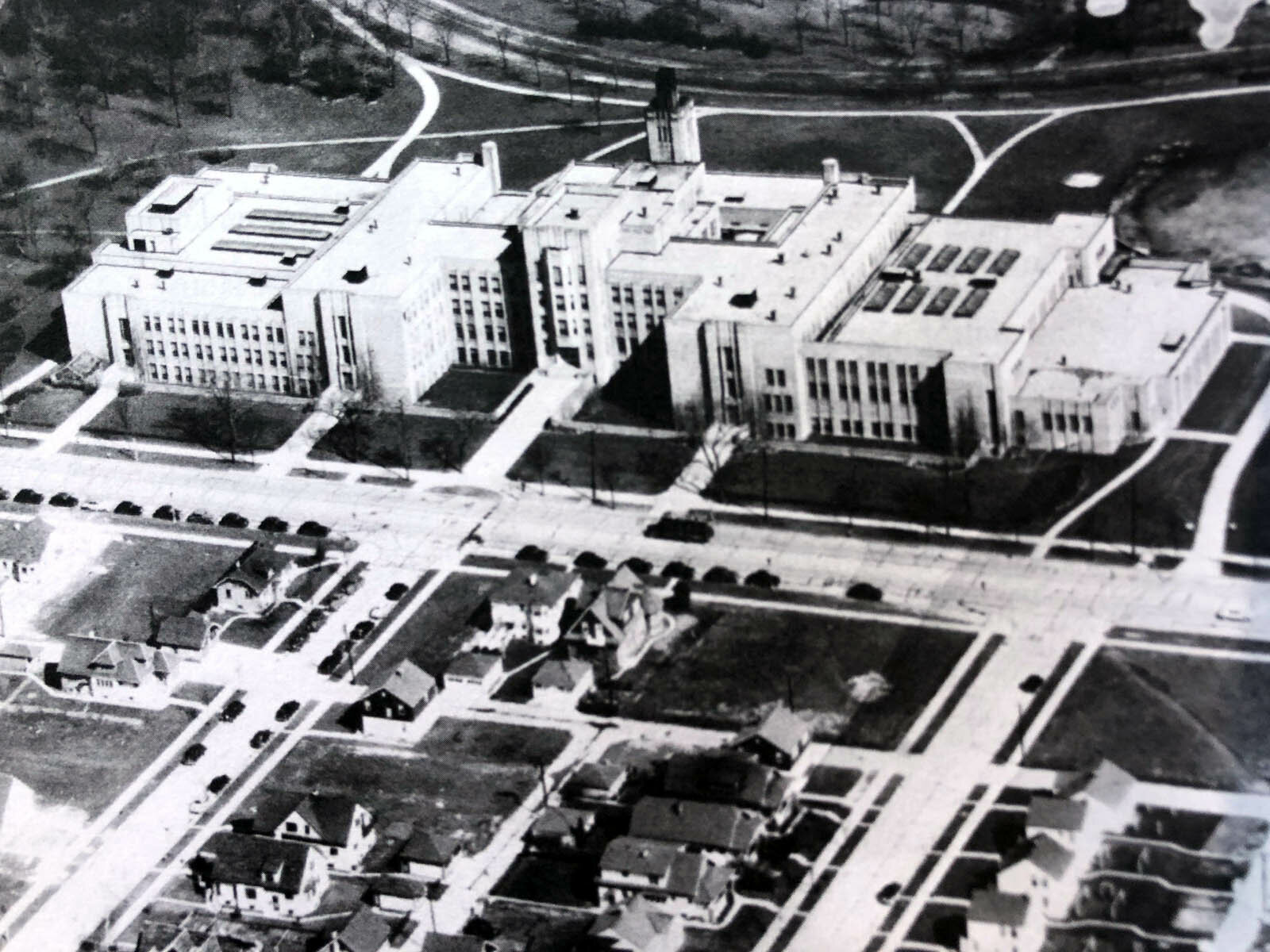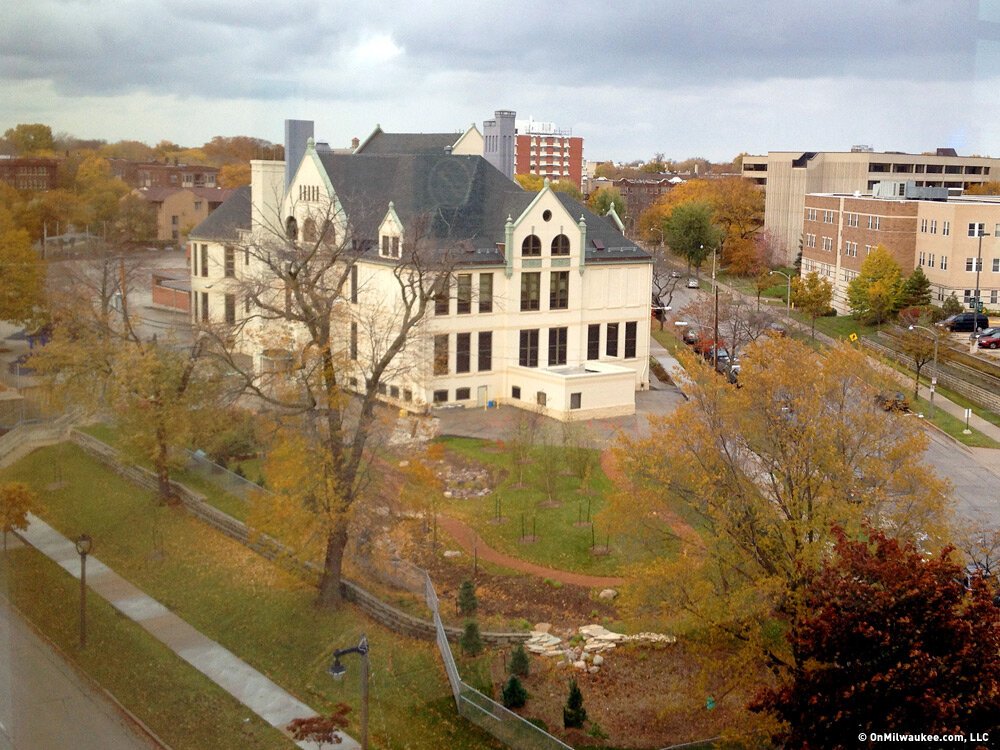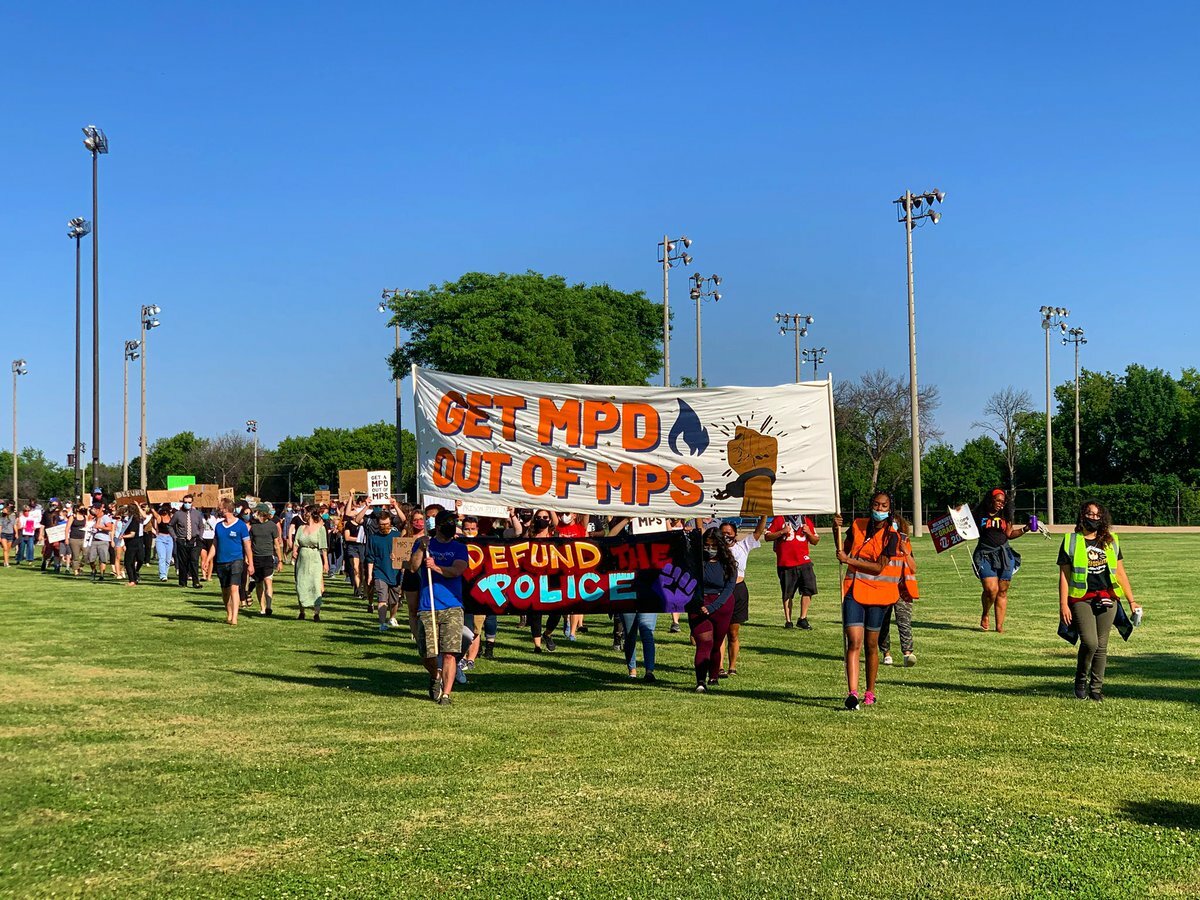Via OnMilwaukee and my 2012 book "Historic Milwaukee Public Schoolhouses," I’ve spilled a lot of ink on the history of the buildings in Milwaukee Public Schools, but even still there’s plenty more to be said about the more than 200 buildings that have housed schools in the city over the past roughly 170 years.
That’s why I love seeing works like Bob Buege’s new self-published book, "Milwaukee’s Pulaski High School in the 20th Century."
In addition to his work as a historian and author of a number of books about Milwaukee baseball – including this one on Borchert Field – Buege was a longtime teacher at Pulaski High School, and so he has intimate personal knowledge of his subject.
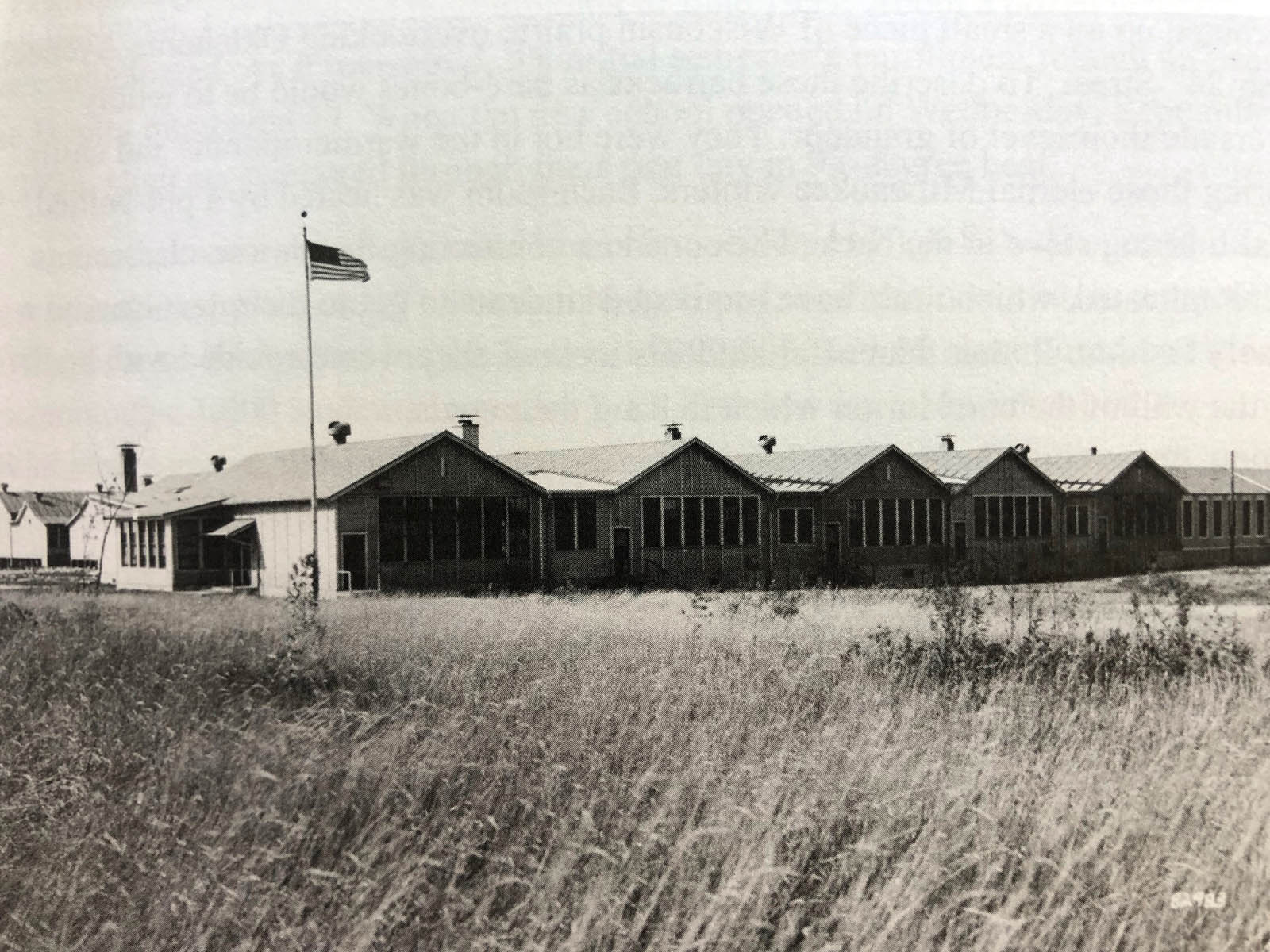
Like Bay View High School and some other MPS schools, Pulaski began life
in a series of "demountable" barracks.
To the delight of this schoolhouse geek the book is packed with construction photos and early images of the school as well as a history of the site and of the long road to getting a permanent school building erected on the site in the 1930s.
To the delight of alumni and prep sports fans, there’s lots of information on coaches and athletes over the year.
There are also biographies of notable alumni – including Bob Kames, Jill Geisler and Holler House’s Marcy Skowronski – and lists of principals and vice principals, too.
It’s a book aimed especially at Pulaski alumni but that will be interesting to Milwaukee history buffs, too.
I asked Buege about the book recently in a socially-distanced email interview.
I know you taught for many years at Pulaski, but what led you to write the book?
Bob Buege: I taught English at Pulaski for 34 years, 1968-2002, so I knew quite a bit about the building. I had colleagues whose Pulaski careers extended back to the origin of the school, 1933, in barracks.
I was curious to learn more about the history, and I wanted to share the history with former and future Pulaski teachers and students. This book is my legacy, if you will, a gift of remembrance of an amazing school that has served the city for a long time.
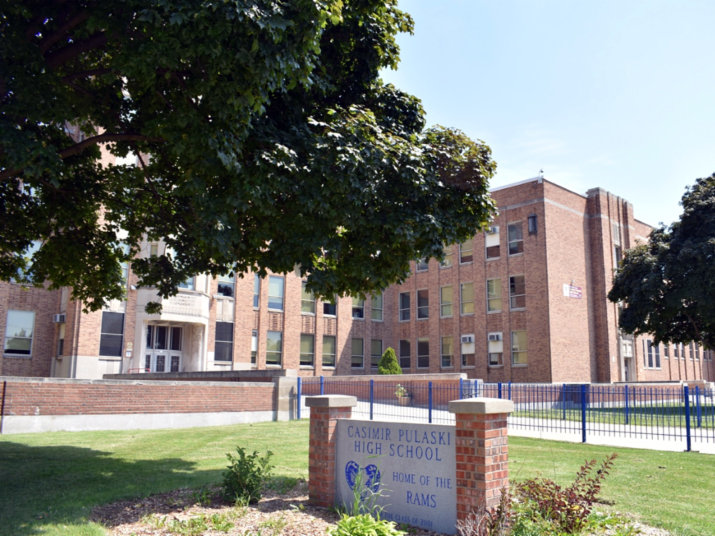
(PHOTO: Milwaukee Public Schools)
What makes Pulaski special among Milwaukee schools?
Many schools, maybe most schools, are special. The people make it special. Pulaski, however, benefited from a convergence of location, time, and society’s attitude about schools.
The Great Depression made citizens appreciate the rise from rude barracks to a massive, magnificent edifice in their own community. And by good fortune, a small lake and parkway sat adjacent to the campus, giving Pulaski the most beautiful setting imaginable.
Did you learn things you didn't already know about the school while doing the research?
My research taught me a great deal about the city of Milwaukee and the school. I learned about the athletic program, its financing, failures and successes, not just Pulaski’s but also the city’s. I also learned about the ownership of the land on which the school rests, and about the ice house that used to occupy the land.
Do you think students and staff appreciate the beautiful building and its history?
I suspect both students and staff look at their school today with less reverence. In 1977 Pulaski had 20 teachers who had attended Pulaski as students. People loved that school, both the structure and the faculty. When I began teaching there, as I was just meeting 144 other teachers, a number of them told me, ‘You’re lucky to be assigned here.’
How do you see a giant building like that operating going into the future? Do you think coronavirus will forever change the large comprehensive high school model?
I would guess that the current pandemic will only hasten society’s move away from large ‘industrial-style’ schools. That style of school was already on the way out.
When I began at Pulaski, we had 2,700 students, down from a high of 3,500 a few years before. When I retired, enrollment was about 1,600. In today’s world, a larger student body would be impossible to control. A whole way of life seems likely to disappear very soon.
If you’d like to order a copy of the book, contact the author at bobbuege@hotmail.com.
Born in Brooklyn, N.Y., where he lived until he was 17, Bobby received his BA-Mass Communications from UWM in 1989 and has lived in Walker's Point, Bay View, Enderis Park, South Milwaukee and on the East Side.
He has published three non-fiction books in Italy – including one about an event in Milwaukee history, which was published in the U.S. in autumn 2010. Four more books, all about Milwaukee, have been published by The History Press.
With his most recent band, The Yell Leaders, Bobby released four LPs and had a songs featured in episodes of TV's "Party of Five" and "Dawson's Creek," and films in Japan, South America and the U.S. The Yell Leaders were named the best unsigned band in their region by VH-1 as part of its Rock Across America 1998 Tour. Most recently, the band contributed tracks to a UK vinyl/CD tribute to the Redskins and collaborated on a track with Italian novelist Enrico Remmert.
He's produced three installments of the "OMCD" series of local music compilations for OnMilwaukee.com and in 2007 produced a CD of Italian music and poetry.
In 2005, he was awarded the City of Asti's (Italy) Journalism Prize for his work focusing on that area. He has also won awards from the Milwaukee Press Club.
He has be heard on 88Nine Radio Milwaukee talking about his "Urban Spelunking" series of stories, in that station's most popular podcast.

